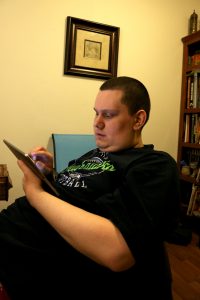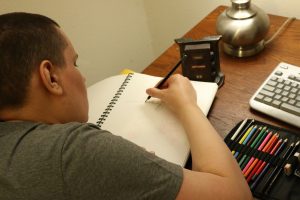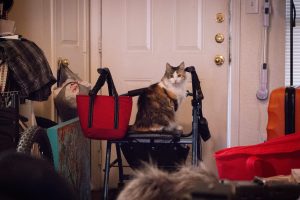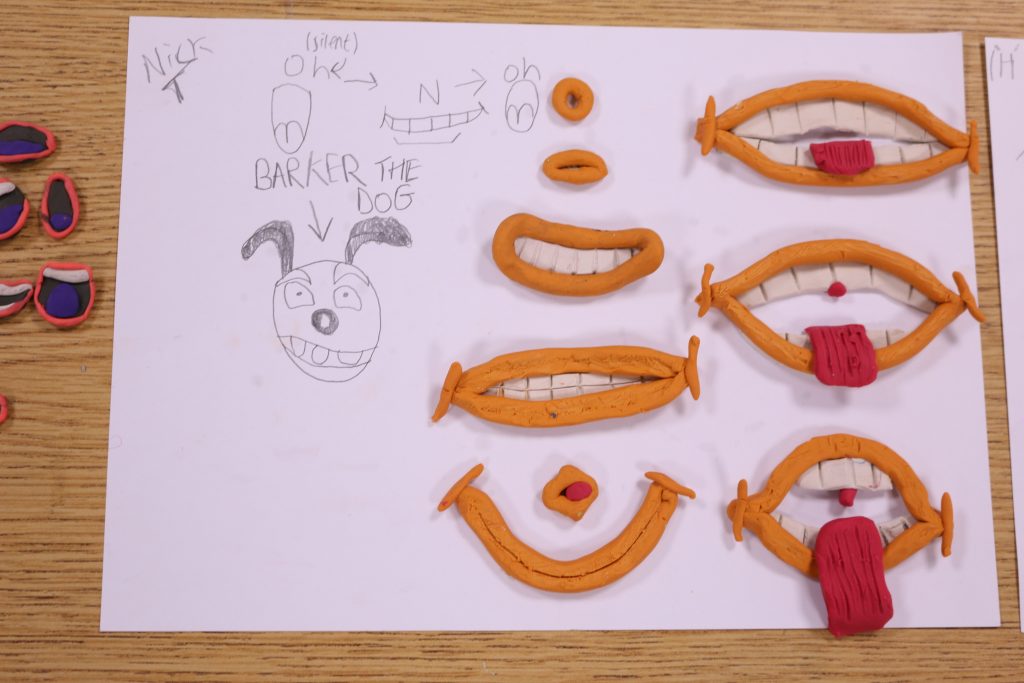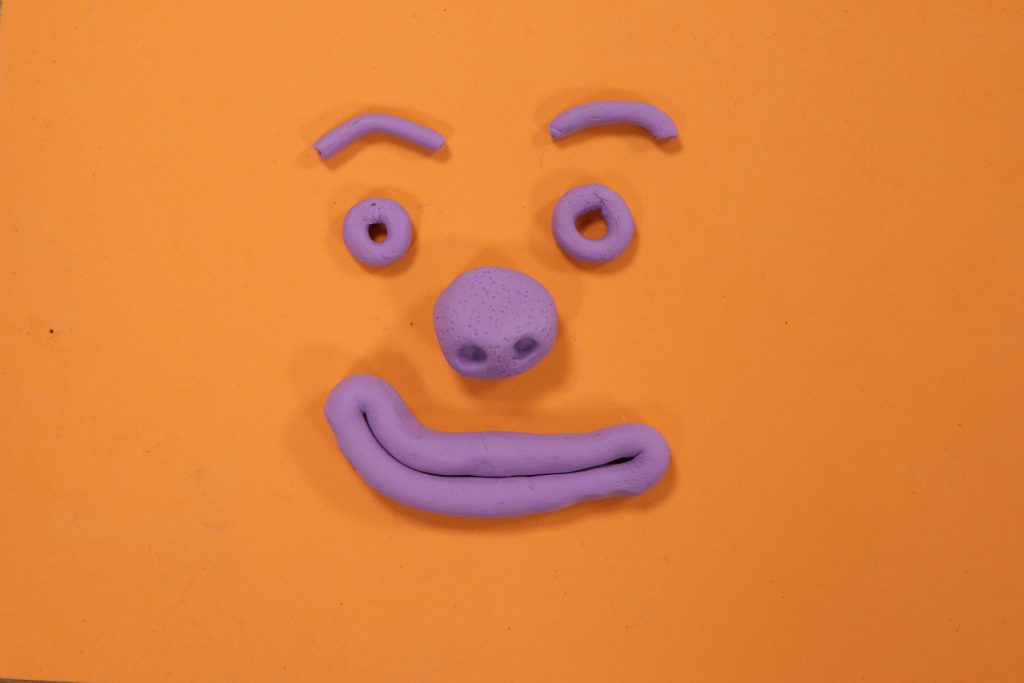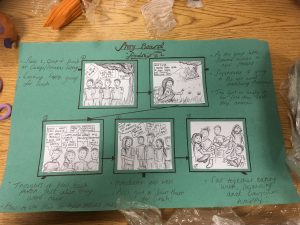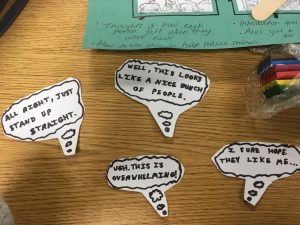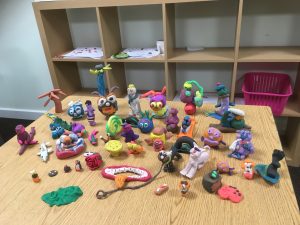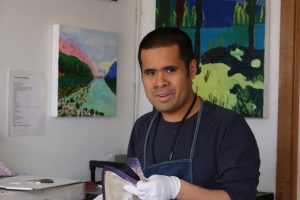 I arrived in Vancouver late on a Friday night in the pouring rain. JA’s parents had arranged for us all to meet on Saturday afternoon, just so JA would know who i am and we’d not be going in cold on Monday morning. Unfortunately JA had plans already. His parents drove me around the city and Stanley park and showed me the sights which was lovely. We spoke a little about the project and arranged to meet mid morning on Sunday, JA too this time.
I arrived in Vancouver late on a Friday night in the pouring rain. JA’s parents had arranged for us all to meet on Saturday afternoon, just so JA would know who i am and we’d not be going in cold on Monday morning. Unfortunately JA had plans already. His parents drove me around the city and Stanley park and showed me the sights which was lovely. We spoke a little about the project and arranged to meet mid morning on Sunday, JA too this time.
I met up with the Tan’s outside their apartment and we walked down to Granville island where JA’s studio is located. It is a lovely room with a big window in a complex of artist’s studios. On the walls hang a dozen or so recent works and by the entrance is a large rack with heaps of painted canvases. JA tells me about the group of seven, a Canadian collective of landscape painters from 1920 – 1933, who he is currently studying. He also shows me his sketch books from his recent cruise around South America. Seals, Llamas and penguins abound! Over lunch we installed an animation app on his iPad
Category Archives: Uncategorized
The Making of our Neurodiversity Leaflet
We were contacted by James Rodger, a clinical psychologist working for South Devon Children and Adolescent Mental Health Services (CAMHS), who asked if we would create a leaflet with information for recently diagnosed autistic adults and parents of recently diagnosed autistic children.
After the main focuses were decided upon, accompanying text was worked on between Dr Ginny Russell, Dr Steven Kapp and James Rodger. The art work for the leaflet was commissioned from the Art of Autism.
10,000 copies of the leaflet were printed and posted to 95 diagnostic centres around the UK in January 2018, with the PDF version also being available on our Exploring Diagnosis website. An additional print run was requested by a service in Bristol due to popular demand.
We ran an online survey to gather feedback on the leaflet and one comment received from a Learning Difficulties health team in Somerset suggested that an alternative version would be beneficial to make the information on the leaflet more accessible. Our Impact and Partnership Development Officer, Clare Pybus, helped to create this modified version drawing on her previous experience of working in secondary and further education with autistic students. An online readability checker was used to scan the text and identify terms or sections that are of high/difficult reading ability and suggests changes to reduce the overall reading level of the text. The layout of the leaflet was also modified in accordance with ‘How to Make Information Accessible’ resource from the Change People charity website.
This new version was reviewed by Autism Spectrum Co-ordinator at Bury College, Manchester, who is very experienced in creating resources for people with autism and learning difficulties. Bury College thought it was excellent and we are hoping to post a PDF version of our adapted, more accessible version very soon.
Meeting James – Day Three
Meeting James – Day Two
Meeting James – Day One
Dom meets Angela
Angela Weddle
CTS Trainer Dom Pitt is in San Antonio, Texas working with Artist Angela Weddle, one of the awesome creatives we’ve been connected to via Debra Muzikar at the Art of Autism
More to follow…
Lynx Reflections from Dom Pitt, Workshop Leader
The final workshop has come and gone. I’ve really enjoyed these six and would rather like to return to Lynx to do more.
For this last session in this series we attempted something a bit more grandiose. A culmination of that which had been learned in the previous weeks. A group project. The subject, suggested by Lena at NAS was meeting new people/being the new person. As a group we discussed what that is like and based on that came up with a simple scenario. A person approaches a group of people, says hello, gets invited to go bowling and subsequently goes bowling.
Once we had our scenario worked out we wrote a list of the things we would need and divvied up their production among the group. Since we have left all of the things made by the group in previous weeks with the Lynx Centre we already had a ready made cast, but the main character was made from new.
The initial plan was to show how our character is feeling with a series of close ups of their face. Time however was not on our side. It is rather difficult and time consuming to portray complex, subtle emotions even for an experienced animator so instead we opted to use the slightly cheaty medium of the ‘thought bubble’ to more easily communicate the characters thoughts and feelings. We did get to use the close up trick to show the perhaps less nuanced sad face to happy face later on in the film though.
Eleven thirty rolled around and the group went off to film club, their animation only half finished. Not an achievement to be sniffed at though. Much of the first session was spent writing the story and making models and thought bubbles. Group 2 came to the rescue and finished the film off, completing the introduction sequence and adding the bowling and close up shots.
I have been really impressed by how much these groups have achieved across these relatively short sessions. The Lynx iPads have istopmotion of them and we have left them with all of the models that have been made over the six weeks so I really hope at least a couple have picked up the taste and carry on making things.
Week 6 – Daisy’s Experience at the Animation Workshop
This final session brought together all the skills the participants had been able to practice in the previous workshops to create a fantastic short film about friendship.
The work that went into this film involved the participants thinking about how they may feel when meeting new people in social situations.
The film allowed the participants to convey their autistic ‘voice’ in the alternative medium of stop animation.
Everyone was able to partake, whether it was making the models or speech bubbles or moving the models or operating the iPad.
Members of the animation group at Lynx seem to have really enjoyed the workshops. They seem enthusiastic about purchasing ‘The Animator’s Survival Kit’ book which outlines in detail the technicalities of walking in animation. They have also been left with access to an iPad with a stop animation app on it such that they can continue to use the skills they have learnt to convey messages about autism to the autistic, and wider, communities.
Week 5 – The Orange and the Purple
After the success of the first lip-syncing workshop I thought I’d try and push it a bit further with a spot of character interaction. I got the guys to co-operate in producing a character interaction, some kind of short conversation. The sessions ended up being relatively brief. Like this one.
Buoyed by a new supply of fresh plasticine there was model-making mayhem. I’m a particular fan of the orange and deep purple characters. In that piece they also used coloured backgrounds and giant plasticine facial features to make ultra close up versions of the character’s faces. It worked fantastically.
There was also a rather nifty conversation between a cat and a snail. I think this group have really got their collective head around the basics of lip sync. With a bit of practise they could get rather good at it.


